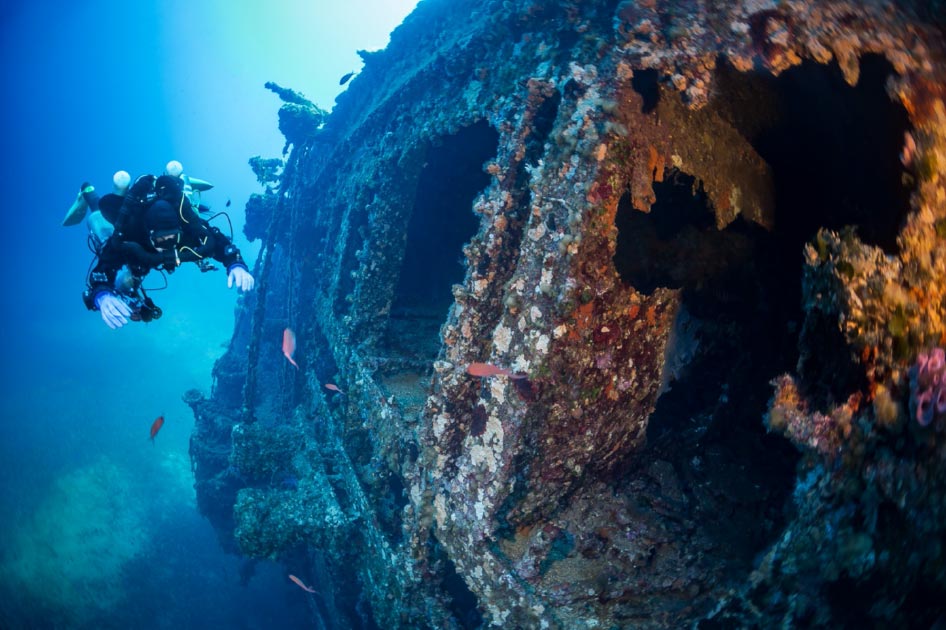Breakthrough in Hunt for Spanish Shipwreck’s Greatest Ever Treasure
Marine archaeologists are renewing their search for a Spanish treasure shipwreck, the Juncal. It is believed that the ship had a cargo of treasure, including precious metals and jewels, when it sank in the seventeenth century. If the wreck is found, it can also provide archaeologists with new insights into Spanish colonial naval history.
The Nuestra Señora del Juncal or simply the Juncal was sailing back to Spain from Mexico when disaster struck it in October 1631. The galleon had a cargo of gold and other precious items bound for the Spanish Crown that could be worth billions today. The omens for its voyage were never good. For example, the day before the vessel was meant to set sail its commander died, while it was taking on water and hardly seaworthy.

Researchers from the National Institute of Anthropology and History of Mexico in the place where the 'Juncal' shipwreck is believed to have sunk. (Rodrigo Del Río Lozano / Instituto Nacional de Antropología e Historia de México)
Disaster at Sea
The Juncal was battered by gales and winds after it left Mexico. Soon the crew was so desperate that they threw the ship's cannons into the sea, in order to lighten the ship. This is despite the fact that they were at risk of attack from English and French pirates. They even had to cut down the mainsail in a bid to make the ship lighter so that it would not sink. However, it was all to no avail and the Juncal went to the bottom of the sea, during a storm.
The Daily Express quotes one survivor as saying that the Juncal sank “in the time it takes to say a prayer.” It is believed that there were 300 passengers and crew on board, but only 39 survived after climbing into a small rowboat. These survivors left a graphic description of the sinking, where the ship went down, and its cargo when it sank.
Survivor Accounts Lead Way to Discovery
The survivors' accounts mean that modern marine archaeologists believe that they can pinpoint the legendary treasure galleon. They are renewing the quest for the Juncal and its riches. In May 2020, archaeologists “will begin a 10-day search for the Juncal,” reports The Guardian.
The search will be conducted by Mexican and Spanish marine archaeologists. It comes after a memorandum of understanding was signed between the two nations in 2014, with regard to investigating colonial-era shipwrecks in the Gulf of Mexico, which will result in many years of close cooperation.

Marine archaeologists are starting to perform the search for the Juncal shipwreck in the Gulf of Mexico. (Instituto Nacional de Antropología e Historia de México)
Dwarfs Previous Shipwreck Finds
Dr. Iván Negueruela, of Spain’s National Museum of Underwater archaeology, is working with his Mexican colleague, Roberto Junco and others on the project. Based on the survivors' testimonies, they believe that they have an excellent chance of rediscovering the vessel that sank almost 500 years ago. Dr. Negueruela is quoted by The Daily Express as saying that the survivors “statements helped us to reconstruct what happened with quite a high degree of accuracy, so we have a fairly good idea of where the ship sank.”
The team also believe that they know the cargo that was on board the ship was carrying a great many gold and silver ingots. It is estimated to have been carrying anything between 120 and 150 tons of precious metals, which could be worth more than $1 billion. According to The Guardian, this is “dwarfing the 14 tons of cargo recovered from another Spanish wreck the Neustra Senora de las Mecedes,” reports The Guardian. In 2007 an international legal dispute arose between the Black Swan Project and the Spanish government over ownership of this ship’s treasures that sank during the Napoleonic Wars near Gibraltar.
There have been several other important discoveries of Spanish shipwrecks in the Gulf in recent decades. For example, in 1985, the infamous pirate ship the Whydah was discovered with its precious cargo. The merchant vessel, the Incarnation (Encarnacion), was also found off the coast of Panama in 2015. Then the frigate, the San Jose, was located in the waters of Colombia, also, in 2015. It was blown up by the British in the early 18 th century and is believed to have had one billion dollars’ worth of valuables on board when it blew up.

Silver recovered from the wreck of the Whydah. (Theodore Scott / Public domain)
- Wreck discovered in Panama identified as Spanish ship from 1681 treasure fleet
- Has Pirate Treasure of Notorious Black Bellamy Finally Been Discovered?
- 10 Spectacular Treasures That Have Never Been Found
Transparency is Key
The team hopes to secure the site, to make sure that it is not looted by thieves and is ready to be studied. They are also committed to total transparency. The Guardian quotes Dr. Negueruela as saying that “when you have a cargo of such extraordinary riches, you’ve got to be totally transparent about what you’re doing, whether you bring up two tons of silver or a single silver spoon.”
The archaeologists believe that the ship itself will be the real treasure. Previously galleons similar to the Juncal were only known from drawings. Now the anticipated discovery of the wreck means that they can examine how they were constructed and what they looked like. Dr. Negueruela, stated that “I’m really keen to discover exactly how the ship was constructed and to see how the bulkheads and the decks were put together,” reports The Guardian. It is also hoped that a new generation of Latin American marine archaeologists can be trained during the project.
Top image: Representation of diver inspecting a shipwreck. Source: Wojciech / Adobe stock
By Ed Whelan



















